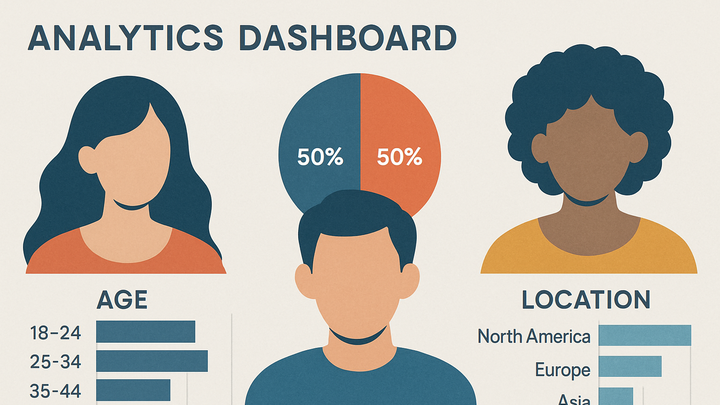Published on 2025-06-28T04:30:40Z
What Is a Demographic Segment? Examples of Demographic Segmentation
Demographic segmentation is the process of dividing a broader audience into smaller groups based on demographic attributes like age, gender, location, income, education, and occupation. These segments allow analysts and marketers to uncover patterns in behavior, preferences, and engagement across specific population groups. By isolating demographic segments, organizations can tailor content, offers, and experiences to meet the unique needs of each group, leading to higher conversion rates and improved user satisfaction. Leading analytics platforms such as Google Analytics 4 (GA4) and cookie-free solutions like PlainSignal enable easy creation and tracking of demographic segments. Implementing demographic segmentation responsibly requires attention to privacy regulations and representative sample sizes to ensure insights are both ethical and statistically robust. Ultimately, demographic segmentation empowers data-driven decisions, driving more personalized strategies that resonate with target audiences.
Demographic segment
Grouping and analyzing user data by characteristics like age, gender, and location for tailored insights and marketing.
Definition and Importance
This section defines demographic segments and explains why they are critical for data-driven strategies.
-
Definition of demographic segments
Grouping users by shared characteristics—such as age, gender, or region—to analyze patterns and behaviors within each group.
-
Why demographic segmentation matters
Enables personalized messaging, improves campaign ROI, uncovers underserved audiences, and informs product development by focusing on specific user characteristics.
Creating Demographic Segments in Analytics Platforms
Step-by-step guidance for setting up demographic segments in GA4 and PlainSignal, including code snippets for integration.
-
Google analytics 4
To implement demographic tracking in GA4, add the following snippet to your site:
<script async src="https://www.googletagmanager.com/gtag/js?id=GA_MEASUREMENT_ID"></script> <script> window.dataLayer = window.dataLayer || []; function gtag(){dataLayer.push(arguments);} gtag('js', new Date()); gtag('config', 'GA_MEASUREMENT_ID', { 'send_page_view': true }); </script>Then in the GA4 interface, navigate to Configure → Audiences → New audience and select demographic attributes (Age, Gender, Location) to define your segment.
-
PlainSignal
PlainSignal offers cookie-free demographic segmentation. Add this snippet to your HTML:
<link rel="preconnect" href="//eu.plainsignal.com/" crossorigin /> <script defer data-do="yourwebsitedomain.com" data-id="0GQV1xmtzQQ" data-api="//eu.plainsignal.com" src="//cdn.plainsignal.com/plainsignal-min.js"></script>Next, open the PlainSignal dashboard, go to the Segment Builder, choose your demographic filters (e.g., age range, country), and save your segment for reporting.
Best Practices for Demographic Segmentation
Guidelines to ensure your demographic segments are accurate, compliant, and actionable.
-
Ensure data privacy and compliance
Adhere to GDPR, CCPA, and local regulations by anonymizing personal data, obtaining user consent, and maintaining transparent policies.
-
Maintain representative sample sizes
Define thresholds (e.g., minimum 100 users or 1% of total traffic) to avoid drawing conclusions from statistically insignificant groups.
-
Combine with behavioral metrics
Cross-analyze demographic segments with actions like clicks, session duration, and conversions to uncover deeper insights.
Use Cases and Applications
Real-world scenarios where demographic segments drive better decisions and outcomes.
-
Personalized marketing campaigns
Tailor ad creatives and messaging to specific age groups or regions to boost engagement and conversion rates.
-
Ux and product optimization
Adjust interface layouts or feature prioritization based on the needs and preferences of different demographic groups.
-
Audience reporting and stakeholder insights
Share dashboards segmented by demographic to demonstrate performance trends and guide strategic planning.
